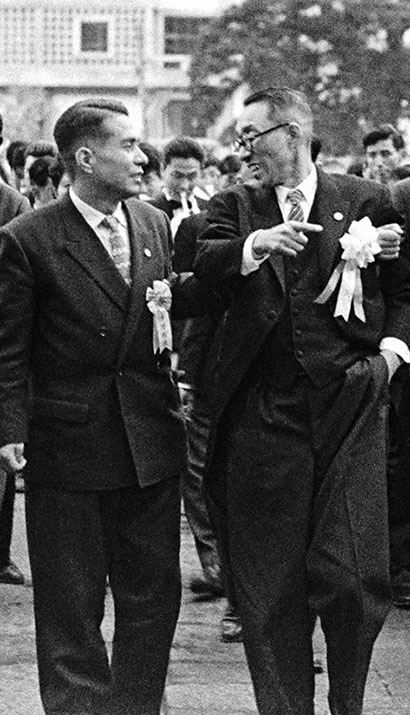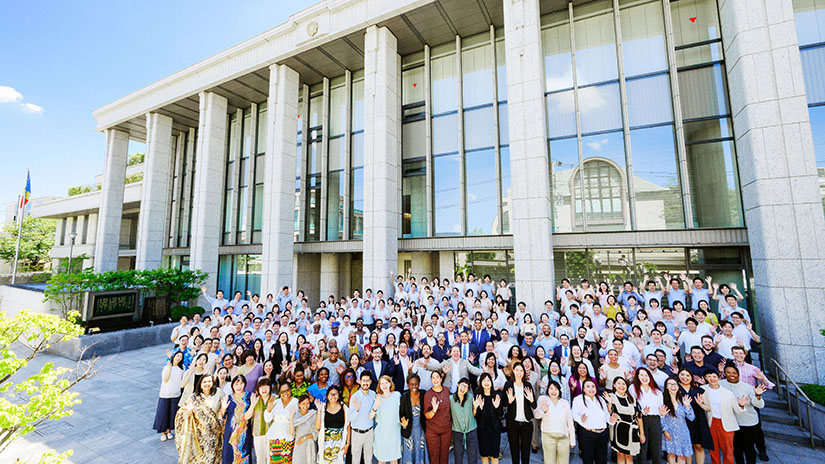Resources for SGI-Spain’s 16th March general meetings
I will teach you how to become a Buddha easily. Teaching another something is the same as oiling the wheels of a cart so that they turn even though it is heavy, or as floating a boat on water so that it moves ahead easily.
↳ The Wealthy Man Sudatta, in WND-1, page 1086. Nichiren Daishonin sent this letter to his disciple Nanjo Tokimitsu in December 1280. The most intense phase of the Atsuhara Persecution —which had seen persecution episodes of several of the Daishonin’s believers in the Fuji area by reactionary social sectors—had taken place the previous year. At that time, the young Tokimitsu acted to protect his fellow believers. Without concern for his personal situation, he took a number of the believers into his home and fought courageously to safeguard them. At about the time the Daishonin wrote this letter, Tokimitsu was experiencing great economic hardship as a result of the authorities imposing heavy punitive taxes. But, instead of worrying about himself, Tokimitsu was more concerned about the welfare of his mentor in the mountains of Minobu during the winter, and he sent him an offering in the form of coins. This letter expresses the Daishonin’s gratitude for his young follower’s sincere support.
[In the cited passage,] the Daishonin tells Tokimitsu that there is a way to become a Buddha easily (cf. WND-1, 1086). Teaching “the way to become a Buddha” means to enable each person to unerringly enter the path to achieving happiness and victory. It is the way by which anyone can become happy. Moreover, it is the way for them to do so easily. This is the path that the Daishonin says he will teach Tokimitsu. To his young follower, who was facing great challenges, nothing could have been more gratifying.
.
(…) Tokimitsu had been exerting himself earnestly as a disciple. Viewed objectively, he was on certain course to attain Buddhahood.
.
But all young people are anxious about the way ahead. They worry precisely because they wish to improve, to grow, to advance even a little beyond where they are right now.
.
Affirming young people’s pure-hearted wish to grow, helping them achieve their full potential, respecting their desire for personal development, and praising and warmly supporting them toward that end—these are the keys to fostering youth.
.
In this letter, the Daishonin shows that we cannot teach others by trying to coerce or dictate to them from a position of superiority. When one oils the wheels, a cart can go forward in spite of its heavy weight. When one floats a boat on water, it can sail ahead easily. These are both examples of assisting or facilitating smooth forward movement.
.
In other words, the important point is to make it easy for someone to move forward, while recognizing that it is up to that individual to actually do the moving forward. We don’t take upon ourselves the challenges that are theirs to overcome [as part of their process of growth.]
.
(…) Each person must shape their own destiny. The aim of Buddhism is to build strong people who can do just that.
.
All possess the noble life state of Buddhahood. All can advance triumphantly on the supreme path of happiness. When we awaken to the fact that we possess within us the life state of Buddhahood as vast as the universe itself, there is no difficulty we cannot surmount. When we manifest our inherent strength, we can challenge boldly, with confidence and joy, the tasks that lie before us each day.[1]
In the lecture from which the above Gosho passage and commentary have been taken from, Daisaku Ikeda writes about the way in which his mentor, Josei Toda, embodied the same commitment as the Daishonin in fostering youthful successors:
When my mentor, second Soka Gakkai president Josei Toda, spoke with young people, he would often share his insights on various events and developments in history and stress the importance of fostering capable people for the future of kosen-rufu.
.
He noted how in some periods of history the absence of capable individuals led to the collapse of a country or civilization, while in others, the presence of many capable individuals produced an age of prosperity and flourishing. He also pointed out specific crises that had been overcome because of capable and talented figures.
.
He emphasized to us: “The great undertaking of kosen-rufu requires fresh passion and energy appropriate to a new age! It is essential, therefore, for youth to rise into action. We need to believe in the power of youth.”[2]
Ikeda Sensei inherited this spirit of the 16th March 1958 and stated that from then onwards, each 16th March was renewed in Soka Gakkai. And every day, actually.[3]

Unlike the participants to the 16th March 1958 ceremony, most of the current youth members of Soka Gakkai have not met their mentor physically. The depth of the bond with Ikeda Sensei that members of “The New Human Revolution Generation” have shows that, as stated in the Gosho, “merely seeing each other’s face would in itself be insignificant. It is the heart that is important.”[4]

[1] ↑ IKEDA, Daisaku: “The Wealthy Man Sudatta,” Daibyakurenge, December 2013.
[2] ↑ Ib.
[3] ↑ Please also see section «Jóvenes 2030» and others in this issue.
[4] ↑ The Drum at the Gate of Thunder, in WND-1, page 949.

